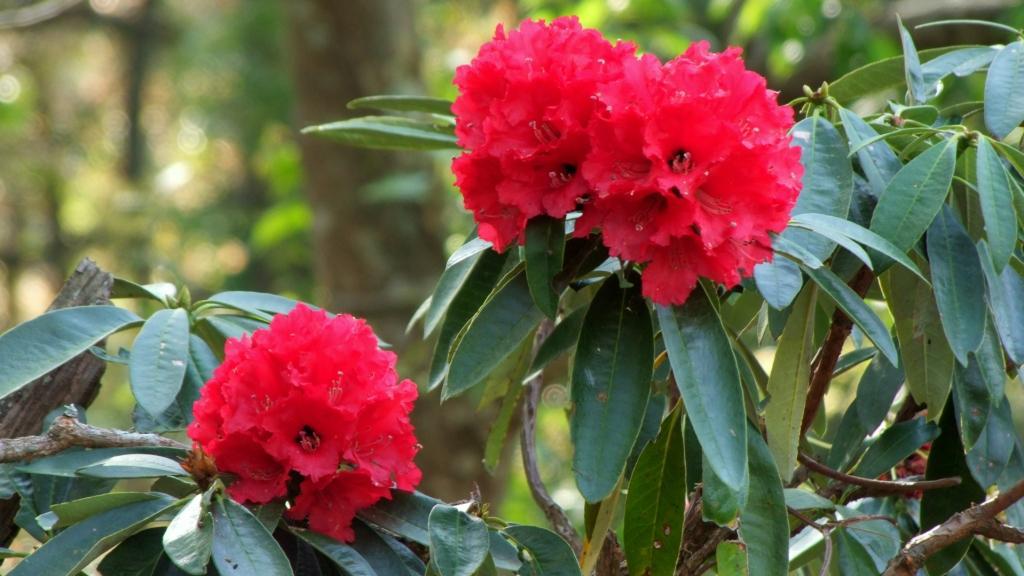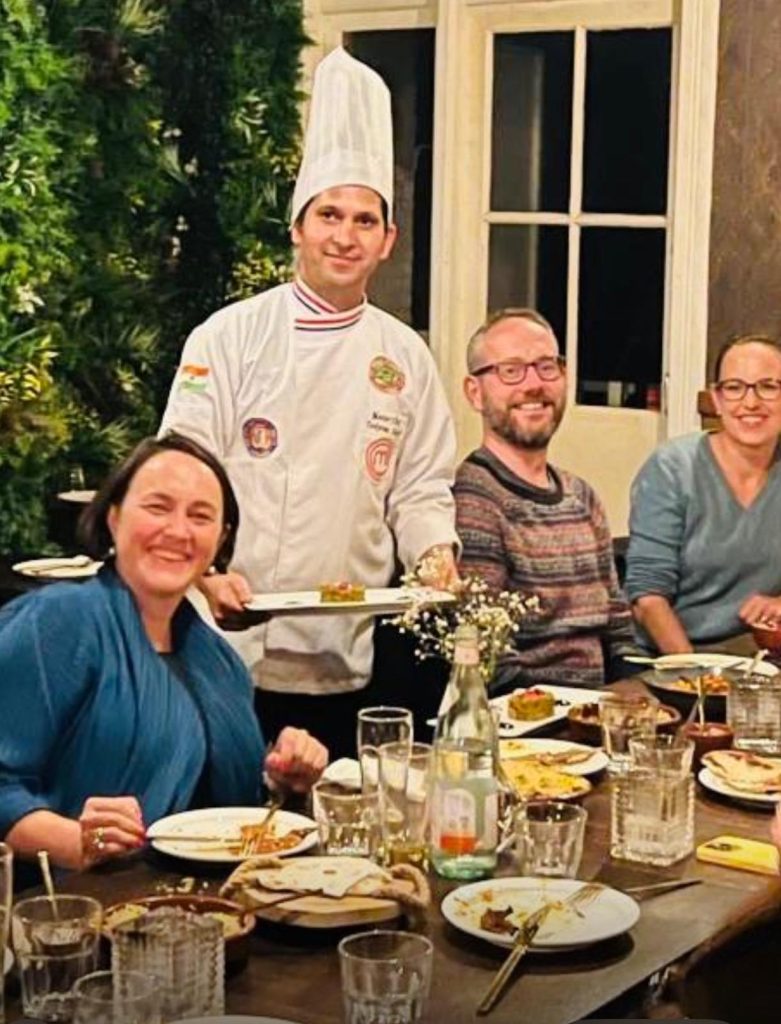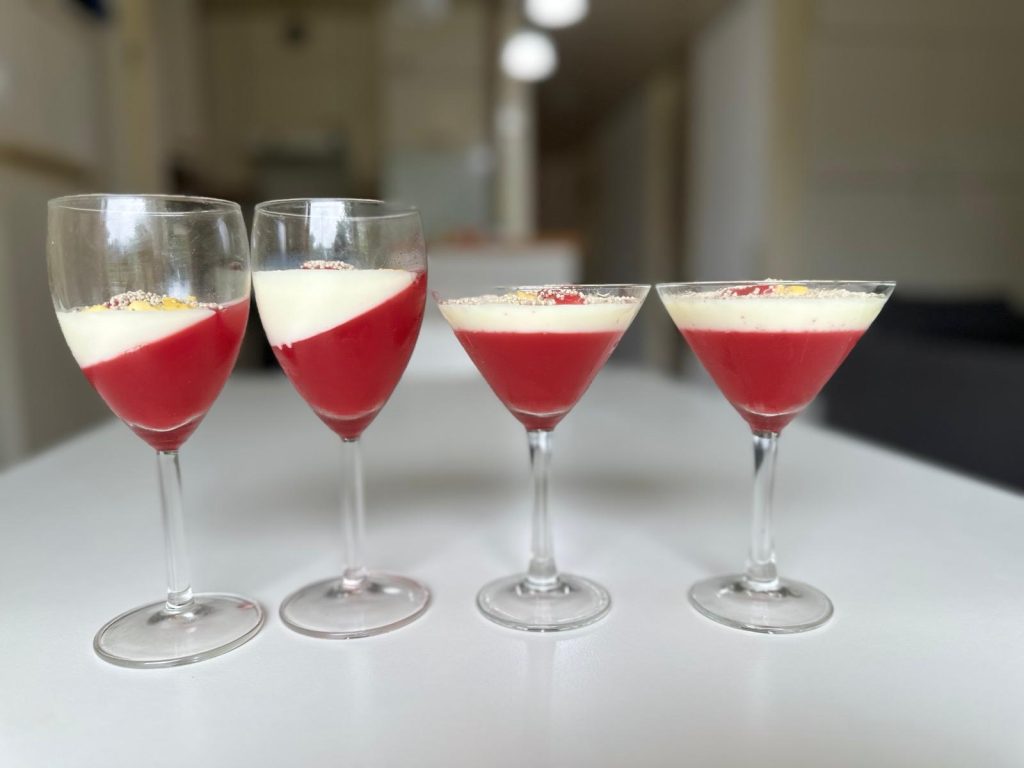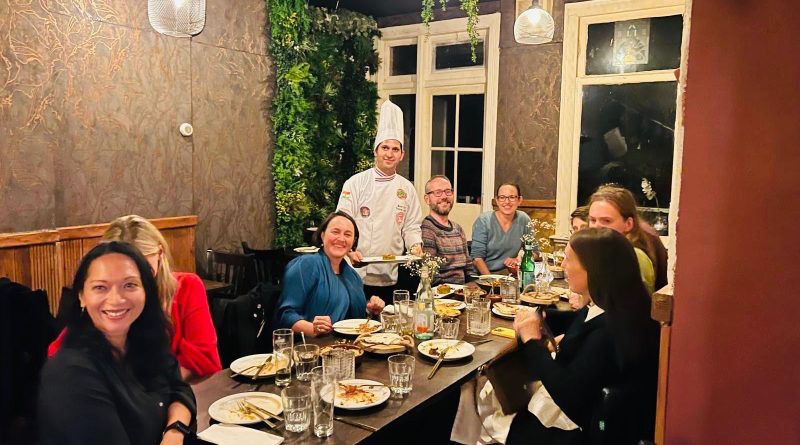RHODODENDRON COCONUT PANNA COTTA ‘BURANS PANNA COTTA’ AN EXCLUSIVE RECIPE BY MASTERCHEF TEEKARAM SINGH IN NETHERLANDS.
Before we begin and learn about the recipe of rhododendron panna cotta AKA burans panna cotta, let’s know about its brief history and medicinal values first. Rhododendron is a large group of flowering plants in the Ericaceae (heath) family, which includes around 1000 species of shrubs and small trees. Known for their beautiful, showy flowers and evergreen leaves, rhododendrons are popular in ornamental gardening and landscaping. They are native to regions in Asia, North America and Europe with many species found in mountainous areas.The generic name Rhododendron is derived from two Greek words, ‘Rhodo which means ‘rose’ and dendron which means ‘tree’. It is also known as ‘Burans, ‘Buras’ or ‘Barah-ke-phool’ in the local dialect in Uttarakhand.

Let’s now move on to the common benefits and uses of rhododendron. Beginning with its medicinal uses and values:
In traditional medicine, especially in parts of Asia (like in India and Nepal), certain rhododendron species are used for their health benefits. Rhododendron arboreum is known for its anti-inflammatory and antioxidant properties. It is often used in Ayurvedic and folk medicines for treating respiratory issues, digestive problems and joint pain. Rhododendron flowers and leaves are sometimes made into teas, pastes or infusions. It may help in reducing oxidative stress in the body. This may contribute to better heart health, improved immunity and reduced risk of chronic diseases.

INGREDIENTS
FOR THE PANNA COTTA:
400 ml (about 1 3/4 cups) coconut milk
200 ml (about 3/4 cup) heavy cream
80 ml (1/3 cup) rhododendron syrup
2 and a 1/2 teaspoons powdered gelatin (or agar-agar for a vegan option)
50 gm (1/4 cup) granulated sugar
(adjust to taste)
1/2 teaspoon vanilla extract (optional)
Edible rhododendron petals.
INSTRUCTIONS:
BLOOM THE GELATIN:
In a small bowl, sprinkle the gelatin over 2 tablespoons of cold water. Let it sit for 5-10 minutes until softened. If you’re using agar-agar, check the packaging for the correct blooming and setting instructions, as it works differently from gelatin.
PREPARE THE COCONUT MIXTURE:
In a saucepan, combine the coconut milk, heavy cream and sugar. Heat over medium-low heat, stir frequently until the sugar is fully dissolved. Do not let it come to a boil.

ADD THE RHODODENDRON SYRUP:
Stir in the rhododendron syrup (or substitute) and vanilla extract if used. Adjust sweetness to taste if needed.
ADD GELATIN:
Remove the saucepan from heat and add the bloomed gelatin. Stir until the gelatin is completely dissolved. If using agar-agar, follow package instructions for incorporating it, as it may require cooking for a few minutes to activate.
POUR AND CHILL:
Pour the mixture into ramekins, dessert glasses or molds. Let them cool slightly, then cover and refrigerate for at least 4 hours or until set.
SERVE:
To unmold, dip each ramekin briefly in warm water, then invert onto a plate. Garnish with edible rhododendron petals or other edible flowers for a lovely presentation.
PICTURE COURTESY: MasterChef TEEKARAM SINGH.
COURTESY: REFT TODAY.













